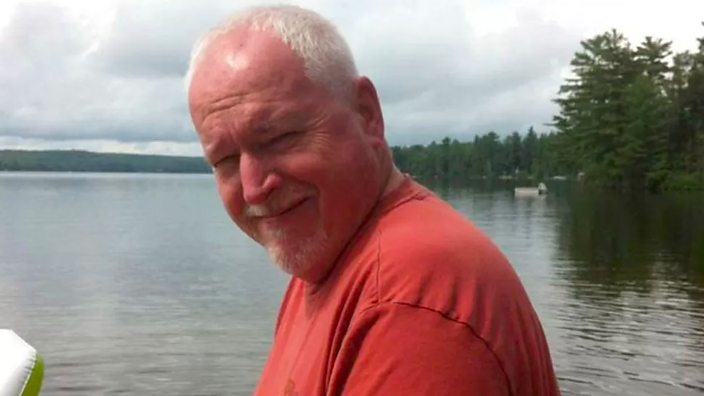Despite multiple encounters with police and even being given a conditional sentence after a violent attack years earlier, McArthur murdered eight men between 2010 and 2017. He was eventually arrested during an operation by Toronto police and investigators went on to find the body parts of his victims hidden in plant pots in a suburban garden where he worked.
At trial, the 67-year-old pleaded guilty to eight counts of first-degree murder for the killings.
His victims were Selim Esen, Andrew Kinsman, Majeed Kayhan, Dean Lisowick, Kirushna Kumar Kanagaratnam, Abdulbasir Faizi, Skandaraj Navaratnam and Soroush Mahmudi. Most had ties to Toronto’s Gay Village neighbourhood – and most were people of Middle Eastern or South Asian decent.
But because McArthur pled guilty at trial, much of this evidence of the case wasn’t heard in court.
For a BBC Three documentary series, I travelled to Toronto to find out how Bruce McArthur killed eight people over seven years, undetected. There, I spoke to people who knew McArthur, the family and friends of his victims and a detective who had suspicions police were dealing with a serial killer many years before he was finally caught.
Secret lives
Many of the men murdered by McArthur couldn’t always be honest about who they were having sexual relationships with because of things like their religious background. While making this documentary series, I discovered that these are some of the many things that made them vulnerable.
Krishna Kumar Kanagaratnam, for example, intentionally lived in the shadows because his claim for asylum after fleeing Sri Lanka had been rejected. He was never reported missing because his friends and family feared that raising an alarm could land Krishna in trouble.
Another victim, Abdulbasir Faizi, was of Afghan origin and had come to Canada as an immigrant. He lived with his wife and children and spent much of his time at work in a factory.
On the night he went missing, he visited a burger bar in Toronto’s Gay Village as well as a gay sauna. Abdulbasir’s wife is said to have been “really shocked” when she was told about his movements on the night he was last seen. Like many of the men McArthur targeted, Abdulbasir had a secret life.
Today, many members of Toronto’s Afghan community still struggle to talk publicly about what happened to Abdulbasir and the other Afghan Canadians targeted by McArthur. I found, through speaking to family and friends of some of the victims, that was partly down to taboos around sex and sexuality.
Victim Majeed Kayhan lived near the Church Street area of Toronto, close to the Gay Village. He’d moved there after the relationship with his wife broke down. They eventually divorced.
He was known as “Hameed” by his gay friends and and according to them was in a relationship with a man, who was known to Majeed’s family as his “roommate”.
Majeed’s nephew Saber says his uncle’s marriage didn’t work out but he maintained good relations with his children. “He loved his kids and had a good relationship with his wife,” says Saber. “They had normal communication.”
Despite the accounts of Majeed’s relationship with a man, his family say he was not gay.
“Absolutely not,” Saber adds. “I know him very well. He was more man than any other person that I know. He was not into those things. Maybe he was tricked into something.”
A lucky escape
One person who had a lucky escape from McArthur was Sean Cribbin, who met him in July 2017. They’d met and exchanged messages online on a hookup app, where McArthur used the user name “Silver Fox”.
McArthur’s profile described him as a “leather daddy” and he wrote that he “likes to push a guy’s limits so they go over the edge”. Sean travelled to McArthur’s Toronto apartment block where the plan was to have sex.
But Sean passed out after using the drug Gamma-Hydroxybutyric acid, more commonly known as GHB.
“When I came round I saw him standing, looking at me,” Sean says. “He never made any reference to the fact I’d lost 20 minutes. I took it as a bad date.”
But in fact, Sean is lucky to be alive. The encounter took place just a month after McArthur had killed his eighth victim.
Sometime after the incident, a detective contacted Sean and said an image of him had been found on McArthur’s hard drive.
“He’d put a hood over my head and duct tape over my eyes,” Sean says, describing the image. “His hand was over a pipe jammed up against my throat and he took a photograph. That happened during the twenty minutes.”
Source: BBC


Comments are closed.